A dog body scoring chart, or body condition score (BCS), is a tool veterinarians use to assess a dog’s weight and overall health. It is a simple and quick way to determine if your dog is overweight, underweight, or at a healthy weight.
A body condition scoring chart is a visual guide that helps you assess your dog’s body fat percentage. The most common BCS weight chart for dogs is a 9-point scale, with 1 being emaciated and 9 being obese.
Body Condition Score Ratings Defined
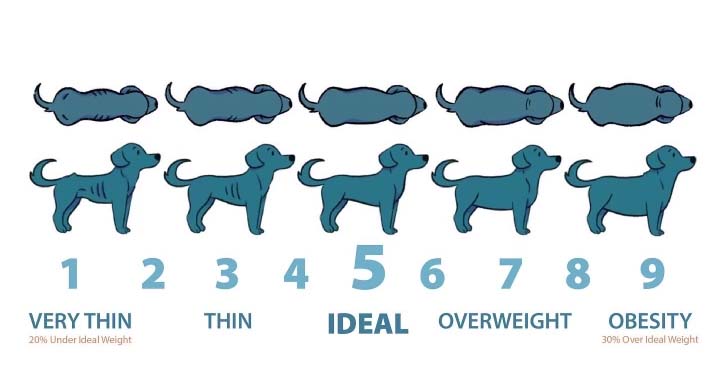
As mentioned, the body condition score system for dogs is typically on a 9-point scale. It’s an effective way to access your pet’s health without the use of a scale to get an exact body weight. Here are the meanings of eat scoring range, as defined by World Small Animal Veterinary Association’s (WSAVA) Global Nutrition Committee:
1-3: Under ideal
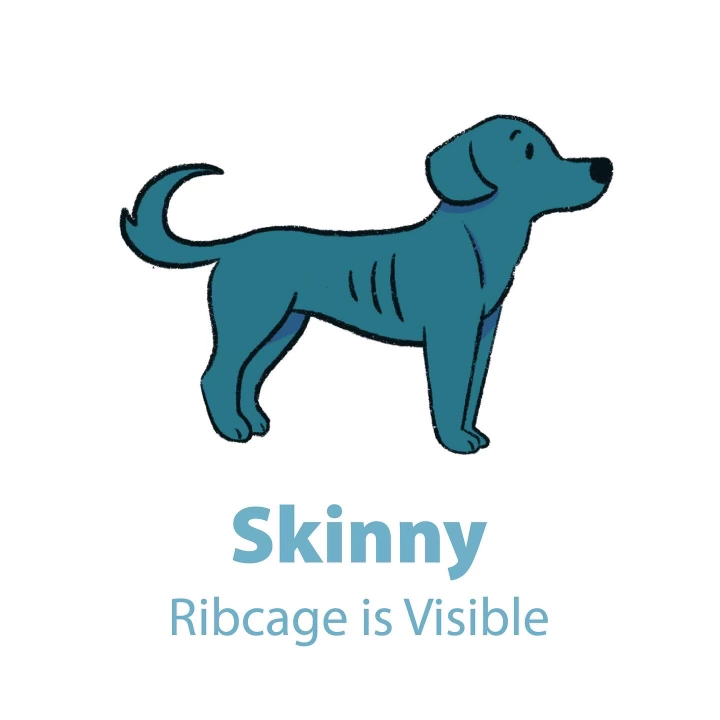
Scores 1-3 indicate malnourishment.
- 1: Appears emaciated. Ribs, lumbar vertebrae, pelvic bones, and other bony prominences are all visible from a distance. No discernible body fat. Obvious loss of muscle mass.
- 2: Very thin. Ribs, lumbar vertebrae, pelvic bones, are easily visible. No palpable fat. Minimal loss of muscle mass.
- 3: Thin. You can feel the ribs which may be visible with no palpable fat. Tops of lumbar vertebrae visible. Hip bones prominent. obvious waist and abdominal tuck.
4-5: Ideal body condition
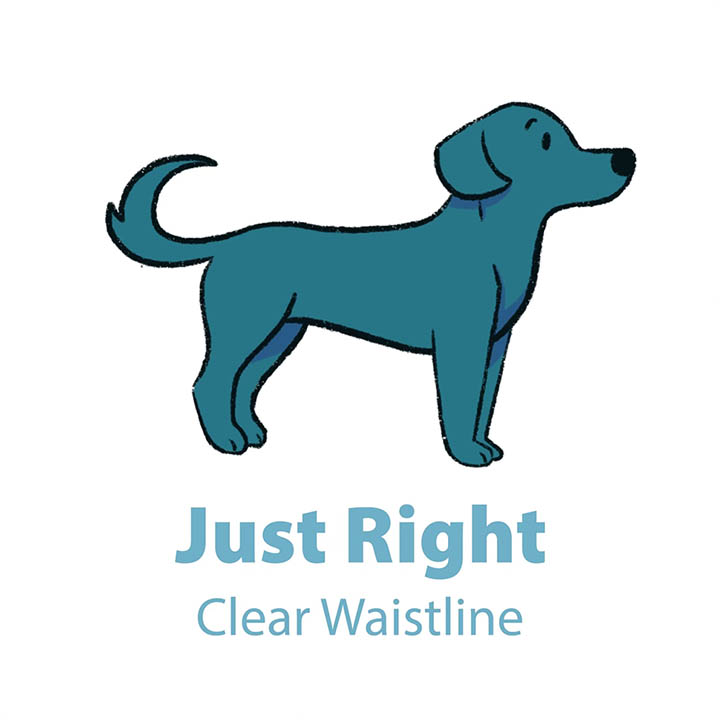
Scores 4-5 represent an ideal weight.
- 4: Ribs are easily felt with minimal fat covering. Waist easily noted, viewed from above. Abdominal tuck evident.
- 5: Ribs palpable without excess fat covering. The waist is seen behind the ribs when viewed from above. Abdomen tucked up when visible from side.
6-9: Over ideal
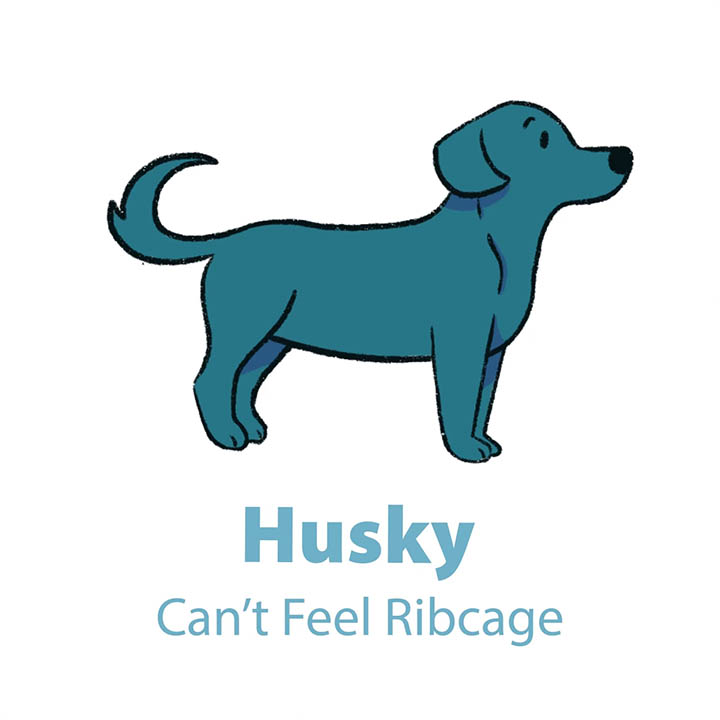
- 6: Ribs palpable with slight excess fat covering. Waist is visible from above but is not prominent. Abdominal tuck apparent.
- 7: Difficult to see ribs. Heavy fat cover. Noticeable fat deposits over lumbar area and base of tail. Wasit barely visible. May have present abdominal tuck.
- 8: Overweight — Ribs can’t be felt under heavy fat cover or can only be felt with significant pressure. Heavy fat deposits over spine/lumbar area and base of tail. No waist. No abdominal tuck.
- 9: Obese — Massive fat deposits over spine, thorax, and base of tail. Waist and abdominal tuck absent. Fat deposits on neck and limbs. Obvious abdominal distention (bloated/swollen-looking stomach).
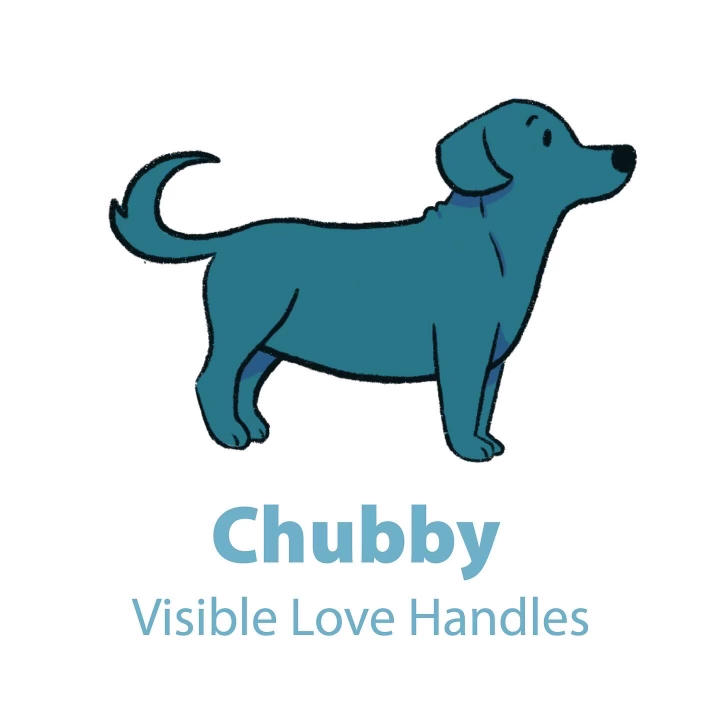
How to Use a Dog Body Scoring Chart
To use a body condition scoring chart, you will need to look at your dog’s body from several different angles. You will also need to feel your dog’s ribs, spine, and hips.
- Ribs: You should be able to feel your dog’s rib cage easily. If you can’t feel them, your dog is likely overweight. If you can see them prominently, your dog is probably underweight.
- Spine: You should be able to feel your dog’s spine, but there should be a thin layer of fat covering it.
- Hips: You should be able to feel the bones of your dog’s hips, but there should be a thin layer of fat covering them.
- Waist: Your dog should have a visible waistline when viewed from above.
- Abdominal tuck: Your dog should have an abdominal tuck when viewed from the side. This means that the abdomen should be tucked up under the ribs.
What Should I Do If My Dog Is Overweight or Underweight?
If your dog is overweight or underweight, you must talk to your veterinarian to develop a weight management plan. They will talk to you about getting calories to fit your dog’s needs and ideal body weight target.
When it comes to obesity, pet owners really need to commit to their pet’s weight loss journey. Did you know that being just moderately overweight can reduce a dog’s life span by two years?
Some dog breeds are more predisposed to health issues like obesity than others. Labrador retrievers, for example, were used in the study that found being just moderately overweight can reduce a dog’s life span. Their genetics puts them at a higher weight range.
Other breed dogs prone to weight gain include beagles, cocker spaniels, bulldogs, dachshunds, corgis, and mastiffs. It’s not uncommon to see these dog’s body condition on the higher end.
The Benefits of Maintaining a Healthy Weight
Maintaining your dog’s ideal weight range is vital for its overall health and well-being. It can help prevent a number of health problems, including arthritis, heart disease, and diabetes. It can also help your dog live a longer and healthier life.
Body condition scoring is a simple and effective way to assess your dog’s weight and overall health. By using a body condition scoring chart, pet parents can determine if you have an underweight or overweight dog in order to start a weight management plan to keep them healthy.
It is important for dog owners to remember that body condition scoring is a general guide. The best way to determine if your dog is at a healthy weight is to talk to your veterinarian.
Sources:
Kealy, R. D., Lawler, D. F., Ballam, J. M., Mantz, S. L., Biery, D. N., Greeley, E. H., Lust, G., Segre, M., Smith G. K., & Stowe, H. D. (2002). Effects of diet restriction on life span and age-related changes in dogs. Journal of the American Veterinary Medical Association, 220(9), 1315–1320.
Laflamme, D. P. (2012). Obesity in dogs and cats: What is wrong with being fat? Journal of Animal Science, 90, 1653–1662.
Roudebush P, Schoenherr WD, Delaney SJ. An evidence-based review of the use of nutraceuticals and dietary supplementation for the management of obese and overweight pets. J Am Vet Med Assoc (JAVMA) 2008;232:1646–1655.
This content is for informational use only and does not replace professional nutrition and/or medical advice, diagnosis, or treatment. It is not a substitute for and should not be relied upon for specific nutrition and/or medical recommendations. Please talk with your veterinarian about any questions or concerns.
